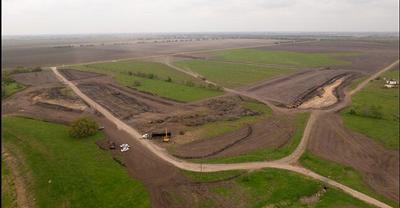- Sections :
- Crime & Public Safety
- Restaurants & Food
- Sports
- More
ExxonMobil planning hydrogen production, carbon capture and storage at Baytown complex

IRVING, TX -- ExxonMobil said today it is planning a hydrogen production plant and one of the world’s largest carbon capture and storage projects at its integrated refining and petrochemical site at Baytown, Texas, supporting efforts to reduce emissions from company operations and local industry.
• Hydrogen would fuel olefins plant, reduce integrated site emissions by up to 30%
• Carbon capture project would be one of world’s largest; double company’s industry-leading capacity
• Hydrogen and carbon capture capacity to help industry reduce emissions
“Hydrogen has the potential to significantly reduce CO2 emissions in vital sectors of the economy and create valuable, lower-emissions products that support modern life,” said Joe Blommaert, president of ExxonMobil Low Carbon Solutions. “By helping to activate new markets for hydrogen and carbon capture and storage, this project can play an important part in achieving America’s lower-emissions aspirations.”
The proposed hydrogen facility would produce up to 1 billion cubic feet per day of “blue” hydrogen, which is an industry term for hydrogen produced from natural gas and supported by carbon capture and storage. The carbon capture infrastructure for this project would have the capacity to transport and store up to 10 million metric tons of CO2 per year, more than doubling ExxonMobil’s current capacity.
Using hydrogen as a fuel at the Baytown olefins plant could reduce the integrated complex’s Scope 1 and 2 CO2 emissions by up to 30%, supporting ExxonMobil’s ambition to achieve net zero greenhouse gas emissions from its operated assets by 2050. It also would enable the site to manufacture lower-emissions products for its customers. Access to surplus hydrogen and CO2 storage capacity would be made available to nearby industry.
The project would form ExxonMobil’s initial contribution to a broad, cross-industry effort to establish a Houston carbon capture and storage hub with an initial target of about 50 million metric tons of CO2 per year by 2030, and 100 million metric tons by 2040. Evaluation and planning for the Baytown project are ongoing and, subject to stakeholder support, regulatory permitting and market conditions, a final investment decision is expected in two to three years.
ExxonMobil has extensive experience with hydrogen and already produces about 1.5 billion cubic feet per day. The company is uniquely positioned to participate in the growing hydrogen market and is evaluating strategic investments to increase the use of this important lower-emissions energy technology.
Equally important is the company’s more than 30 years of experience capturing and permanently storing CO2. ExxonMobil has cumulatively captured more human-made CO2 than any other company and has an equity share of about one-fifth of the world’s carbon capture and storage capacity, which amounts to about 9 million metric tons per year.
ExxonMobil Low Carbon Solutions business was established to commercialize low-emission technologies and is focusing on carbon capture and storage, hydrogen and biofuels – technologies where the company can leverage its core competencies and competitive advantages. Over the next six years, the company plans to invest more than $15 billion on lower-emission initiatives and could increase investments with advancements in policy and technology.
Sound government policies will accelerate the deployment of key technologies at the pace and scale required to support a societal net-zero future. Predictable, stable, cost-effective policies are necessary to incentivize the development and scalability of a wide range of low-emission technologies, including hydrogen and carbon capture and storage. ExxonMobil continues to support an explicit price on carbon to establish consistent incentives and encourage investments.
ExxonMobil is committed to helping society reduce overall greenhouse gas emissions by decreasing the company’s emissions intensity and developing and deploying emission-reducing technologies and products. Increasing the supply of products with lower life cycle greenhouse gas emissions enables the transition from higher-emissions alternatives.

















